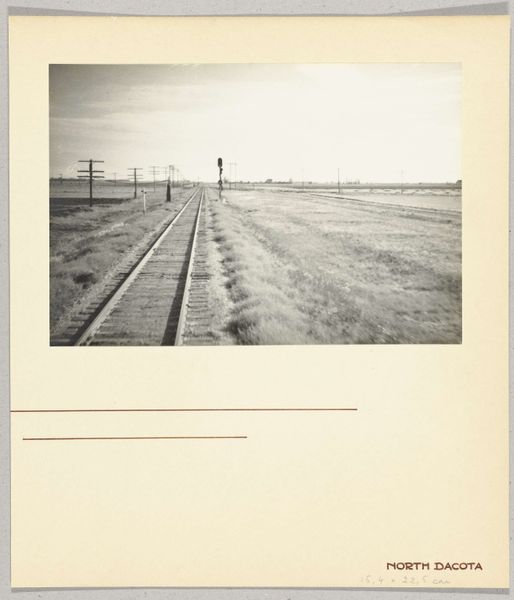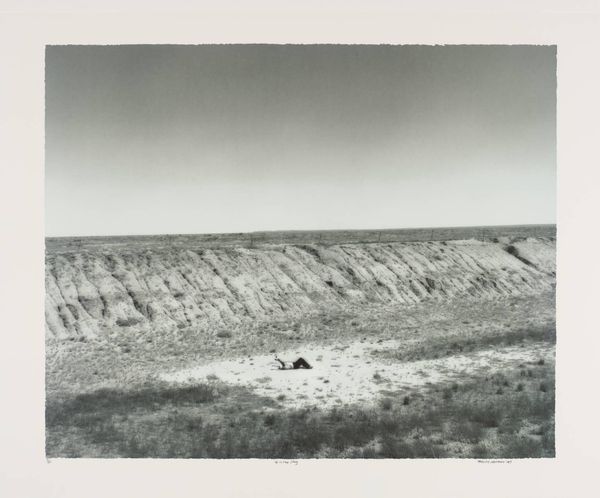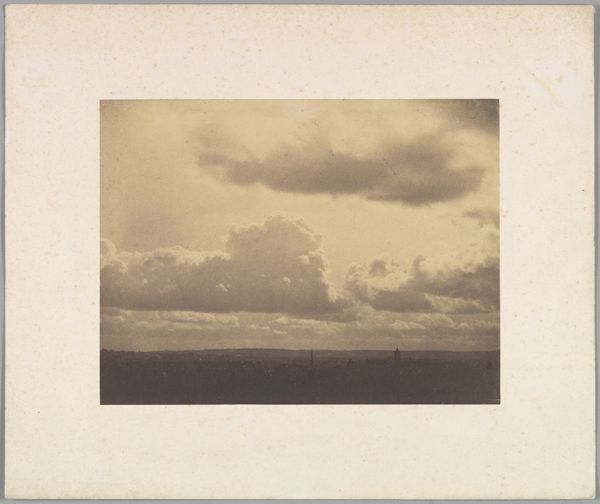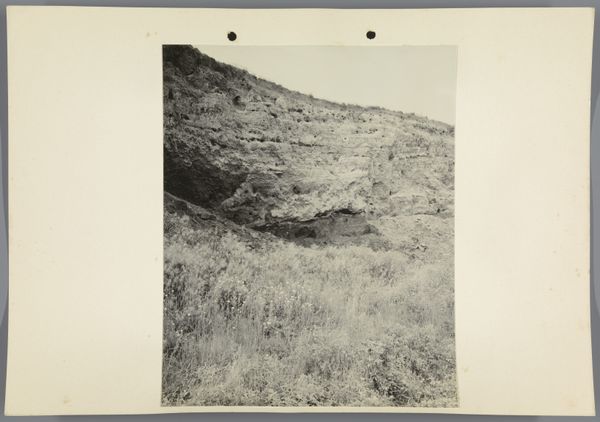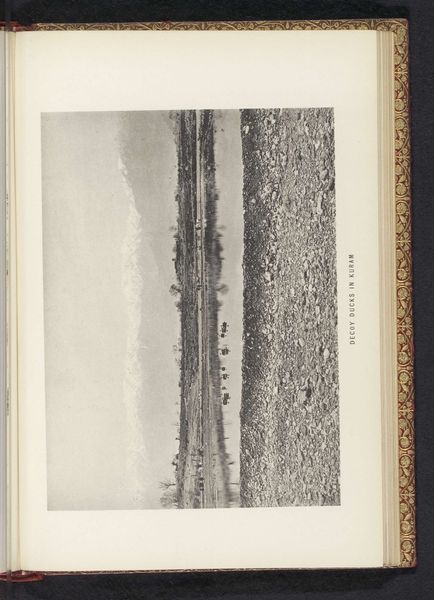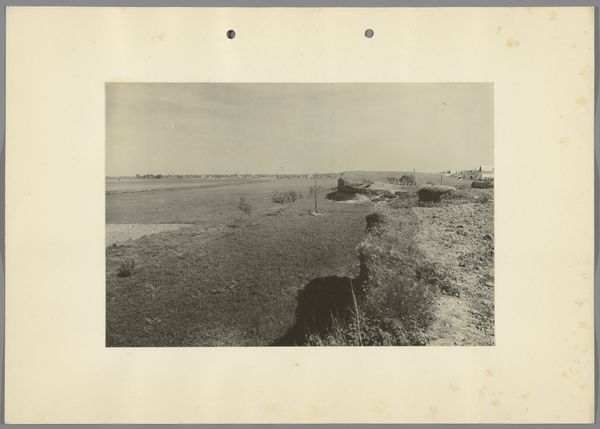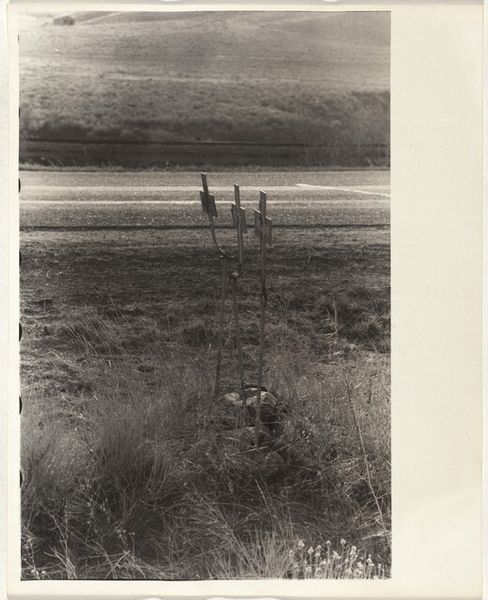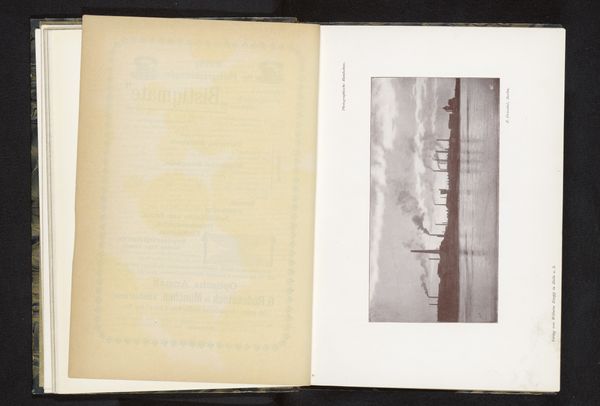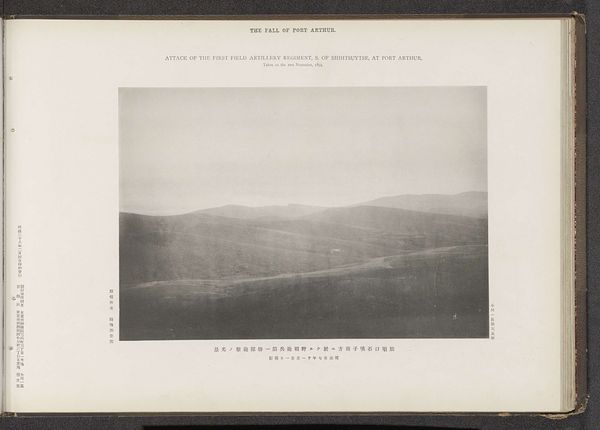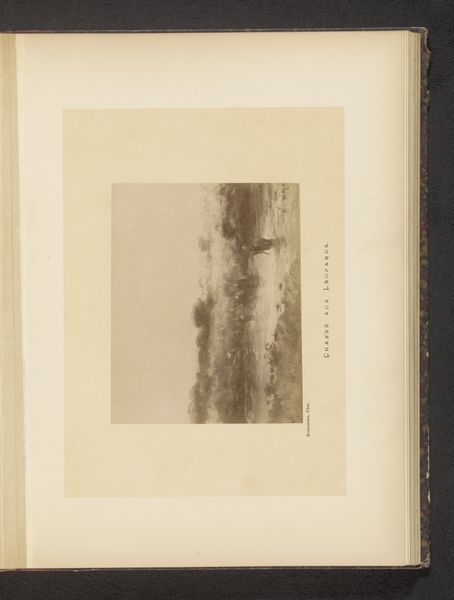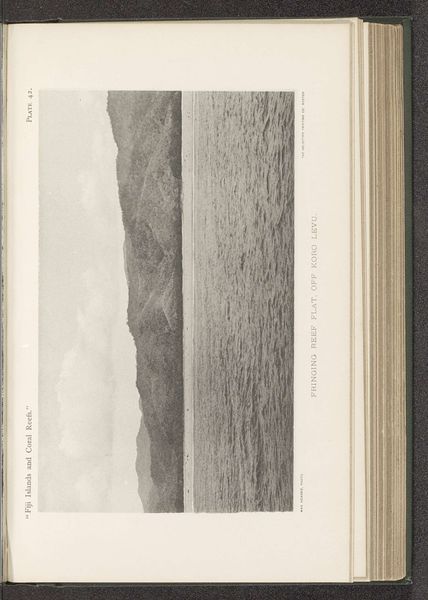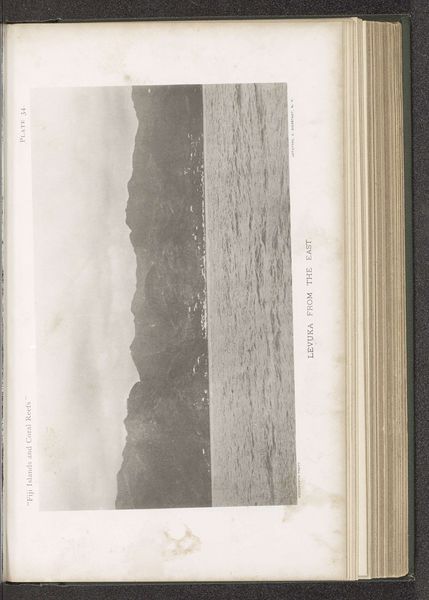
photography, gelatin-silver-print
#
landscape
#
photography
#
gelatin-silver-print
#
modernism
#
regionalism
#
watercolor
#
realism
Dimensions: height 156 mm, width 224 mm, height 315 mm, width 285 mm
Copyright: Rijks Museum: Open Domain
Curator: This is "Landschap in Texas," a gelatin-silver print by Wouter Cool, dating from 1936. Editor: Immediately I’m struck by the scale, the vast flatness contrasting with the dramatic cloudscape. There's almost a desolate beauty to it. Curator: Cool, though not broadly known today, aligned himself with modernist and regionalist movements. Notice how the fence slices across the frame, seemingly an imposed geometry on the wild expanse. What do you read into that, considering the date? Editor: The fence reads very much like a material barrier, perhaps reflecting anxieties about land ownership and the dust bowl era. It bisects what would otherwise be an endless panorama, pointing to issues of access and human impact on this landscape, doesn't it? Silver gelatin was relatively affordable, making photography like this much more accessible. The social context is important. Curator: Precisely. The clouds, rendered almost mythic, evoke a sense of divine or natural power, set against the very earthly, very delineated land. I'm fascinated by how the power lines, however subtle, stand as symbols of progress, or even a forced modernization. They bring to mind manifest destiny. Editor: The flatness also emphasizes a starkness that is accentuated by the medium itself. Gelatin-silver offers such a range of tonal values, highlighting textures that might be lost in color photography. Think about the economics of silver mining, then imagine what went into making a relatively affordable medium for a landscape about ownership. It really emphasizes Cool's engagement with both the place and its people. Curator: And consider the psychological impact of landscape. In times of great hardship, these expansive scenes offer a sense of hope, or the illusion of it, while at the same time symbolizing alienation. Editor: Seeing this today I appreciate how this print encourages a wider view, not only of the landscape, but of art's role in representing that landscape—and the society within it. Curator: A potent blend of visual elements which really distills the experience of observing landscape into the photographic form, capturing an essence that remains powerful to this day.
Comments
No comments
Be the first to comment and join the conversation on the ultimate creative platform.
